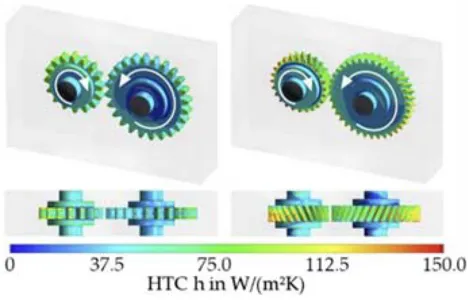Research Topic
| Short Title | Thermal Gear CFD |
| Start of Project | Q3/2024 |
| Funding | FVA-Nr. 857/III, IGF-Nr. 01IF23339N Federal Ministry for Economic Affairs and Climate Action, BMWK |
| Contact | Dr.-Ing. T. Lohner |
Project Description
The aim of the research project is to systematically investigate the heat transfer inside the gearbox. Computational Fluid Dynamics (CFD) is used to support the calculation of the heat balance in the gearbox during the development process. The current state of knowledge does not provide any recommendations on how heat transfers can be calculated numerically, taking into account gearbox-specific parameters. In addition, there is no detailed measurement data on heat transfers inside the gearbox that can be used to validate the numerical calculation models.
The results of the research project are the heat transfer in the dip lubricated gearbox. Numerical calculation methods are used to describe the thermal gearbox fluid flow. The FV and SPH methods are used. In addition, calorimetric measurements are carried out on the modified FZG no-load power-loss test rig to validate the numerical calculation. Both the experimental and computational investigations are carried out as part of a parameter study in order to be able to quantify the influence of different gearbox-specific parameters on the heat transfer inside the gearbox. Finally, recommendations for action are presented for the calorimetric measurements as well as for the modeling and calculation.
For SMEs, the research project offers the advantage of accelerating development and reducing costs through the targeted use of CFD methods. A better understanding of the heat flows in the gearbox also offers the potential to better design gearbox systems in terms of lubricant management and heat dissipation. Further improvements in resource efficiency and cost-effectiveness are likely by saving on the amount of lubricant.
Literatur
[Hil22] Hildebrand, L.; Dangl, F.; Paschold, C.; Lohner, T.; Stahl, K.: CFD Analysis on the Heat Dissipation of a Dry-Lubricated Gear Stage. Applied Sciences 12. Heft: 20, S. 10386 (2022). doi.org/10.3390/app122010386.
